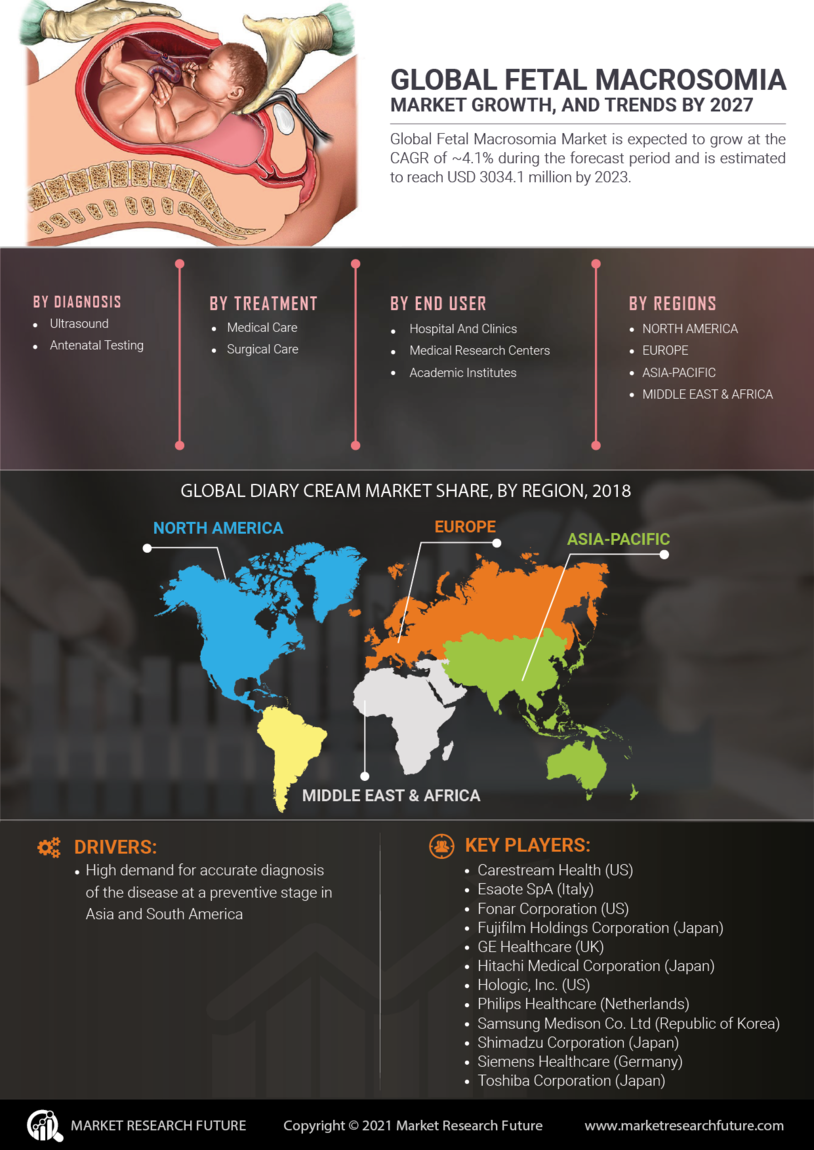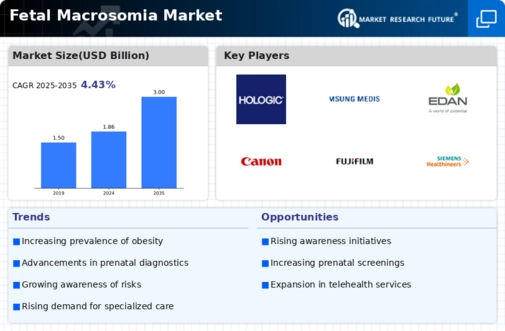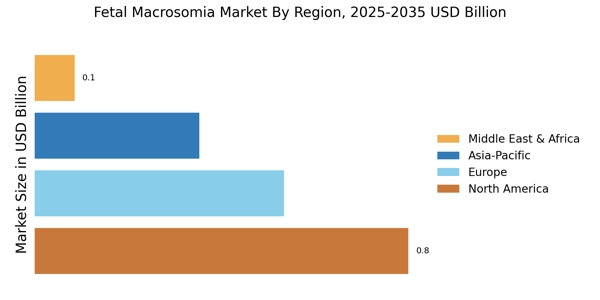Rising Incidence of Fetal Macrosomia
The increasing prevalence of fetal macrosomia is a notable driver in the Fetal Macrosomia Market. Recent data indicates that the incidence of macrosomia has risen, with estimates suggesting that approximately 10 to 15% of all pregnancies may result in this condition. Factors contributing to this rise include maternal obesity, diabetes, and advanced maternal age. As healthcare providers become more aware of these trends, there is a growing demand for effective monitoring and management strategies. This heightened awareness is likely to propel the market forward, as healthcare systems seek to implement preventive measures and interventions to address the challenges posed by fetal macrosomia.
Advancements in Diagnostic Technologies
Technological innovations in prenatal diagnostics are significantly influencing the Fetal Macrosomia Market. Enhanced imaging techniques, such as 3D ultrasound and MRI, allow for more accurate assessments of fetal size and growth patterns. These advancements enable healthcare professionals to identify potential cases of macrosomia earlier in pregnancy, facilitating timely interventions. The market for prenatal diagnostic tools is projected to grow, driven by the increasing demand for precise and reliable methods to monitor fetal health. As these technologies continue to evolve, they are expected to play a crucial role in improving outcomes for both mothers and infants affected by fetal macrosomia.
Growing Focus on Maternal Health Initiatives
The emphasis on maternal health initiatives is a critical driver in the Fetal Macrosomia Market. Governments and health organizations are increasingly prioritizing maternal health, recognizing its impact on fetal outcomes. Initiatives aimed at reducing maternal obesity and managing gestational diabetes are gaining traction, as these conditions are closely linked to fetal macrosomia. The implementation of comprehensive maternal health programs is likely to enhance awareness and education among expectant mothers, leading to better health practices. This focus on maternal health is expected to create a supportive environment for the growth of the fetal macrosomia market, as healthcare providers seek to address the underlying causes of this condition.
Increased Research and Development Activities
The surge in research and development activities related to fetal macrosomia is shaping the Fetal Macrosomia Market. Ongoing studies are exploring the genetic, environmental, and lifestyle factors contributing to macrosomia, which may lead to the development of targeted interventions. Funding for research in maternal and fetal health is on the rise, with various institutions and organizations investing in studies aimed at understanding and mitigating the risks associated with fetal macrosomia. This influx of research is likely to yield new insights and therapeutic options, thereby expanding the market and improving clinical practices surrounding fetal macrosomia.
Rising Demand for Specialized Healthcare Services
The increasing demand for specialized healthcare services tailored to fetal macrosomia is a significant driver in the Fetal Macrosomia Market. As awareness of the condition grows, more expectant mothers are seeking specialized care to manage their pregnancies effectively. Healthcare providers are responding by offering comprehensive services, including nutritional counseling, diabetes management, and personalized birth plans. This trend is likely to lead to the establishment of specialized clinics and programs focused on fetal macrosomia, enhancing access to care for affected families. The expansion of these services is expected to contribute to the overall growth of the market, as more individuals seek targeted support during pregnancy.


















Leave a Comment